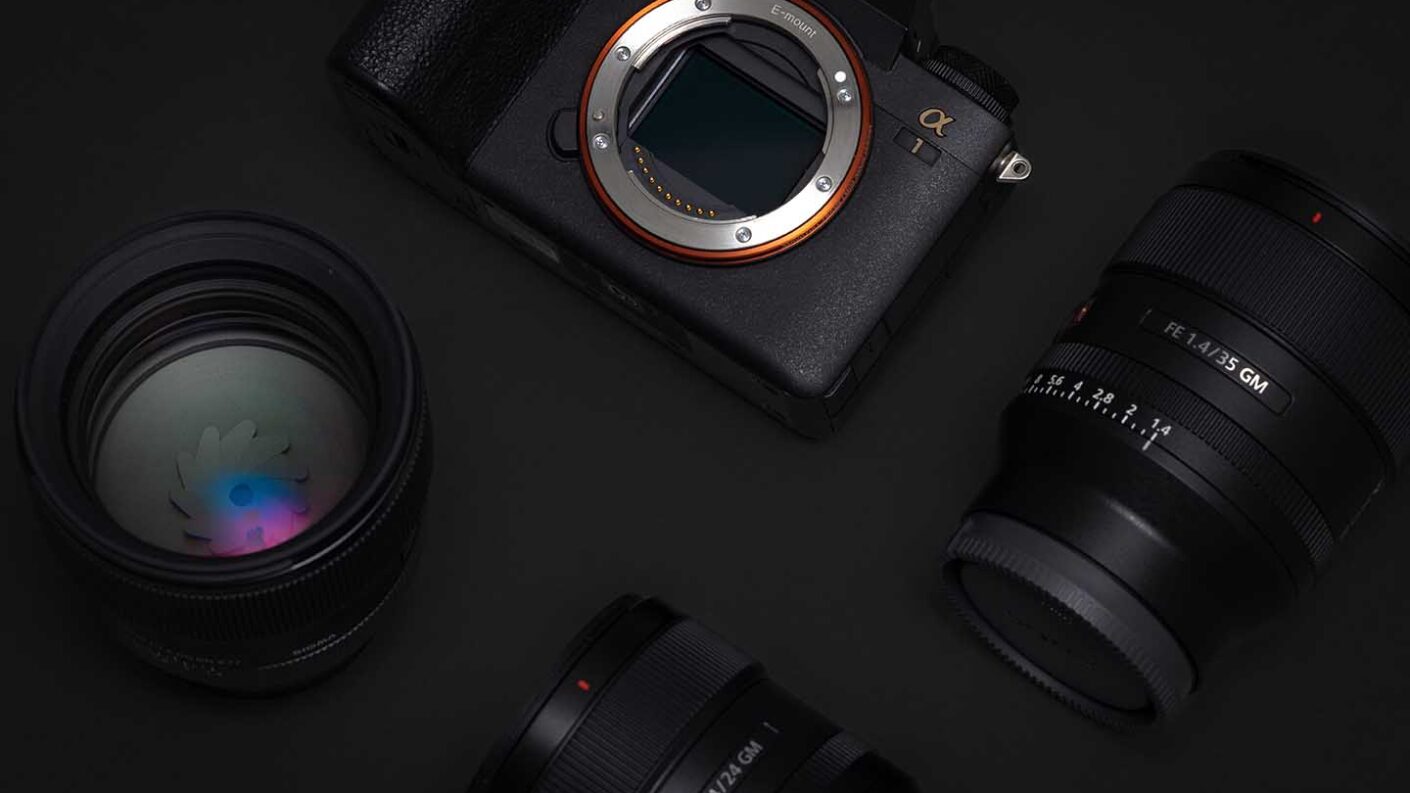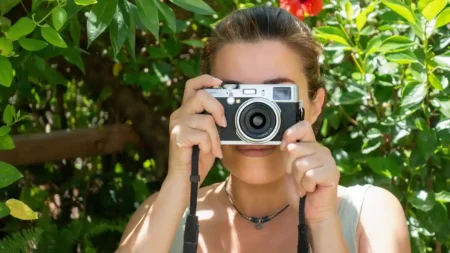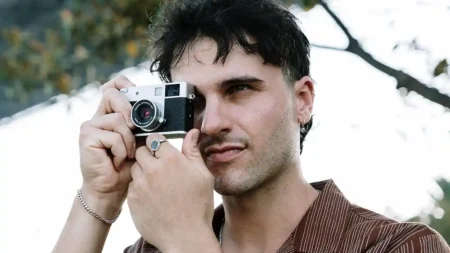For decades, the Canon vs Nikon debate echoed the familiar rivalries of Coke vs Pepsi or Mac vs PC – each side fiercely loyal, each convinced their brand reigned supreme. But here in 2025, that debate feels increasingly outdated. Clinging to old brand allegiances misses the bigger picture: the mirrorless revolution is in full swing, and innovation is now coming thick and fast from the likes of Sony, Fujifilm, Panasonic – even OM System and Leica.
Mirrorless technology has completely reshaped the camera landscape, combining the flexibility of interchangeable lenses with a more compact, streamlined design than traditional DSLRs. Sony, in particular, has led the charge with its A7 series cameras and A9 series – and more recently, the A7R V and flagship A1 II – pushing the limits of resolution, autofocus, and speed. With an expansive E-mount lens ecosystem now addressing earlier gaps, Sony’s place at the top of the mirrorless market feels well earned.
Not to be outdone, Canon has introduced a series of mirrorless cameras with the latest EOS R50 V, a compact mirrorless camera designed for content creators. Building upon the success of the original R50, the R50 V retains the 24.2MP APS-C sensor and Dual Pixel CMOS AF system but features a redesigned, more modular body optimised for video production. Notable enhancements include 4K 60p recording with 6K oversampling, Canon Log 3 for greater dynamic range, and improved audio capabilities with both microphone input and headphone monitoring. These features make the R50 V a great choice for videographers and hybrid content creators you can read more about the camera on the official Canon product page or check out our review of the Canon EOS R50 V.
Nikon has also made significant strides with the release of the Z6 III in mid-2024. This full-frame mirrorless camera boasts a 24.5-megapixel partially stacked CMOS sensor, offering faster readout speeds and improved performance. It supports 6K video recording at 60 frames per second and features advanced autofocus capabilities powered by deep learning AI, enhancing subject detection and tracking. The Z6 III’s robust five-axis in-body image stabilisation system further solidifies its position as a versatile tool for both photographers and videographers.
Parallel to Sony’s rise, Fujifilm has continued to carve its own distinct path, dominating the APS-C mirrorless market with a combination of technical excellence and classic design. The recently launched Fujifilm X-M5 refines this approach, offering the brand’s renowned image quality and tactile controls in a compact, travel-friendly body. It brings 40.2MP resolution, improved in-body stabilisation, and AI-assisted autofocus – making it a serious tool for both stills and video shooters.
But Fujifilm isn’t stopping at APS-C. The announcement of the GFX100RF, a premium compact with a fixed 102MP medium format sensor, has turned heads. It represents a bold step toward merging high-end imaging with portability – appealing to pros who want top-tier quality in a more spontaneous, everyday-friendly format.
From analogue-inspired dials to cutting-edge tech, Fujifilm’s lineup blends the soul of film photography with the demands of modern creatives.
Canon, although late to the mirrorless party, has not only caught up but also shown a commitment to pushing boundaries. The brand is building out an impressive range of APS-C EOS R system cameras – including the EOS R50 V, designed with content creators in mind – proving it can adapt and innovate in the face of shifting market dynamics. The old guard isn’t ready to bow out just yet.
Nikon, while more measured in its mirrorless rollout, has produced standout performers in its Z series. The Nikon Z9 remains a powerhouse for professional shooters, blending classic Nikon handling with cutting-edge tech. And with the release of the Z6 III, the brand shows it’s not just reacting to the market – it’s evolving with it.
Panasonic, with a sharp eye on its filmmaking audience, has embraced mirrorless for what it does best: hybrid creativity. Cameras like the Lumix S5II and S5IIX demonstrate Panasonic’s deep understanding of video-first needs, offering serious tools for modern content creators.
The traditional Canon vs Nikon debate has evolved into a much broader conversation. Now, it’s not just about two brands – it’s about a diverse field of manufacturers, each with their own philosophy on design, usability, and innovation. The question isn’t “Canon or Nikon?” anymore. It’s “What’s the best tool for me?”
The old battles are over – and that’s something to celebrate. We’re in the middle of an unprecedented era of innovation, where every photographer, regardless of experience or budget, has access to extraordinary tools. Brand loyalty has taken a backseat to real-world performance, and the creative possibilities have never been greater.
So instead of picking a side in an outdated rivalry, let’s embrace the options we’ve been given. It’s a brilliant time to be a photographer.
- Camera buying guides: how to choose the best option for you




Based. I own both Canons and Nikons and all of them are great machines.
What you say is true… but I’m 60.
I have a 25 year old Nikon system chart on my wall framed. It’s not a canon chart or a Sony system chart. It’s brand loyalty. Back when owning a Nikon was something that you aspired to own.
I am a casual photographer.
I have owned everything from an F3hp to a df and D 800 thanks to E bay. I’ve tried every brand but fuji and Sony. For me It’s Nikon period.
Same here I started out with a brand NEW FE back in 78. I saved up ro get it with the 58 1.2 noct.And quickly acquired a 105 1.8 and a 300 2.8. Have all of them still today.Have owned F2HP,F3F5 and D70,90,200 300,600,700,750,800,850,D3,D3S,D4 AND Z50,Z5 Z7 and currently have FE ,Z5 andZ7 contemplating z 8 or 9.
8
F-mount for the win.
I discussed agree…
You still have to pick a brand and stick to it….the reason…is the lenses will not work properly interchangeably… meaning nikon on Canon…etc…
When we get to a point where they work interchangeably..then this article be accurate..
Lenses are interchangeable, with adapters. And work great. And I use my Canon lenses and Sigma lenses with a Sigma Mount on my Sony A7R3(a).
the debate is far from over as ‘brand boys’ still fan their brand all across the info-sphere. what typically changes is as artists and craftspeople ‘mature’ and ‘develop perspective’ they open their minds to competing ideas and products which they can place inside their toolbox.
Forgot to mention GFX, which turned the medium-format digital market upside down.
Very good perception.
I started with Canon in early 70s and stayed with them. Loved the conversion to EF as I saw it was the future and proved right 35 years later as everyone else has copied it.
The R7 I have uses all my EF lenses perfectly full functionality retained and now use my R, FL and FD lenses on the R7 in manual focus as originally designed but with the R7 focus peaking.
No Olympus? What a review!
Technically speaking, there is no Olympus.
Yeah, but you didn’t mention OM either though
No, but that wasn’t a slight on OM System. Olympus / OM System has developed some of the best image stabilisation, for instance.
There’s still Olympus shooters out there. I use one, too, but I also use Nikon. Nikon is the main, Olympus is for videos and as a backup. Olympus(Now OM System), ain’t dead yet.
Well, there is OM Systems. The production continues.
Sure… it’s OMDS, and their OM-1 is the most advanced M43 camera available, at least for stills photography. Showing that going independent, rather than being a hobby division of a biomed company, has been very good so far.
There have always been other brands….
The title is clickbait. It should have been something like,” the new Nikon – Canon debate” or something like that. The current title makes it seem like there was a winner, which there’s not. I hate it when writers mislead perceptions before the article even begins. BTW it’s Nikon all day long. 800, 850, z7ii, z9.
All these modern mirrorless cameras are fantastic. It comes down to what ecosystem you are currently in and more comfortable with. Only fan girls cry about which one is, better.
There is still no camera from others to beat NikonP1000.
If I slap the 2x teleconverter on my Olympus 100-400mm lens, I get a far better image at a 1600mm equivalent than the P1000 at that focal length. And I can crop in, if necessary. Of course, it’s more money and more complexity, but that tiny 1/2.3″ sensor in the P1000 is wise than most cellphones today. The P1000’s effective optical resolution at f/8.0 is less than 2 megapixels.
I was Canon user from the film days to the start of digital with a T2i till Canon removed it from it’s site. In ’13 and ’14 PS and Lr both each cost $800 and for each full update, Sony came with C1 for $30 and the Mod 1 and 2’s came with on camera apps too. The A7S also has bracketing 5 @ +/- 3EV (it was the HDR days) also ISO range 50 to 409,600 when others maxed out at 6400 and mod 2’s came with Bright Monitoring to top it off a $20 adapter I could use my old film lenses and Canon or Nikon lenses. Today Sony has filled the holes of any lens you would want and making better ones smaller and with AF rails. Silent shooting and high ISO got rid of shutter noise and flashes on the capital, YEA! Canon and Nikon will take years to catch up, Canon users have to get rid of their mirror lenses when going mirrorless!?!
Ed,
I am a lifelong Canon user and the Canon is on an equal footing with Sony in the mirrorless department. The 5R is an amazing machine and actually feel like a camera vs this dainty little Sony A7s. Canon is doing just fine mate.
What the article misses entirely is, it isn’t about whether one camera is better than the other… but how deeply one is entrenched in lenses…as part of their entire system. Meyer may think that Nikon versus Canon is over, but he’s dreaming… and just regurgitating words for content…
Lens options are, of course, an important criterion when considering which brand and system to invest in, but that’s a separate argument and article, which you are very welcome to write and send in to us, if you like! This article wasn’t about one camera being better than another; it was about the old Canon vs Nikon debate not being relevant anymore:
The traditional Canon vs Nikon debate has evolved and given way to a broader discussion that encompasses a host of brands, each with their own unique take on technology, design, and usage. The question is no longer “Canon or Nikon?” but rather, “What is the best tool for my specific needs?”
There is no debate about who is the best. It’s pentax! I have used Pentax for decades and I love all of my equipment. One thing I love is that I don’t have to buy a new set of lenses every time a new model comes out. A K mount is a K mount. Even even a legacy lens will work to some extent on a brand new Pentax camera.
I have both Canon and Nikon cameras and lenses and enjoy both. In my humble opinion I would say the controls on the Canon are ‘simpler’, easier to use and learn while Nikon throws the ‘kitchen sink’ at you when it comes to features. However, I find shooting the Nikon’s a more enjoyable experience because the camera seems more responsive and the shutter sounds silky smooth. I’m basing my opinion on a few cameras that I own so I really can’t say the same for the entire camera lineup of Nikon/Canon. Sometimes I even find the Canon features lacking or antiquated compared to Nikon, but at the same time Nikon cameras can become overwhelming with all the features and customization options. I can pick up a brand new canon camera and without reading the manual go out and shoot an entire wedding. Not so with the Nikon, sometimes I even have to go back to the Manual for the most mundane things. At the end of the day and under the right conditions, I prefer the final outcome, that is the look of the images comming out of the Canon cameras. Their ‘Color Science’ is just hard to beat.
Been Nikon user since the 70’s. Still own f2as, f100, nikonos v, d700’s…fisheye, primes and zooms.
And they still all take pictures! Which is what matters.
Sony may be technologically more advanced with chip development (often fitted in Nikons, certainlyin the past)…but owe their heritage to Minolta…who were the boss of innovations and brilliant optics.
Its about time I see a comment mention Minolta. I still have mine that made me love photography. I still use it for my black n white photo studies. I dont believe I can reach the same clarity and depth with digital (perhaps thats just me hanging on to film for nostalgic reasons,idk) … I use a Nikon dslr today but haven’t forked over the big $ for a mirrorless, I hear ill be quite shocked.
Unless you’re made of money, it matters less which platform you choose than that you choose a good top 5 platform. And stick to it unless you can afford to abandon it
I would have to say Canon or Nikon go test out one of each and find the one you feel comfortable with. They are cameras a tool, if you don’t feel comfortable with the camera you won’t enjoy shooting.
I am a Canon user have always been, I shoot sports, news and concerts. I look at it this way. I started with an xti, but My cameras last I had a 7D with 450000 shots on the shutter, dropped it and broke the display on the top of the camera. I have a 7d mkii with 600000 shots on the shutter, and just added the R7 mirrorless to my arsenal. I enjoy shooting with my Canon systems because they are comfortable to me. I can use all of my EF mount lenses with the adapter( I got the adapter with the programmable ring). I have to admit the R7 is definitely a better camera than my 7D MKii but they each have their purpose.
I care for my equipment, if you do you should have no problems, with your camera, doesn’t matter the brand. Research and test them out and use, whatever brand you like. In the end the photographer is who makes the shot. Newer isn’t always better.
Have you got enmity with Olympus? Otherwise, while you mentioned Panasonic who make micro four thirds, how could you forget a camera like OM-1 of Olympus OM Systems which is innovative in many ways?
I shoot with both a Canon EOS Rebel T3 and a Nikon D5000. I really do enjoy using both cameras. The things I like about the Nikon over the Canon are the user customization by the owner and the flip down viewing screen.
Always remember: regardless of the camera brand or model, a lack of composition and technical skills will yield identical results.
Sony with old Nikon and Canon glass. So far I like the old Nikon glass better, so I guess I have picked a side in the last war.
In the old film days, I was a committed Nikon user, then since the advent of digital, its been Olympus (now OM Systems). Personally, I couldn’t care less about whose name is on the package, but unfortunately that’s been largely done for us with proprietary lens mounts, and electronic interface protocols, and etc. . . Yes, there are adapters, but it isn’t the consumers who created brand loyalty as much as the marketing and engineering behind the product lines.
I would personally love to see a marketplace where there was agreement on a standard lens mount for instance; however that doesn’t exist. The closest thing to an open standard was the four-thirds and micro four-thirds standards, and now, I suppose the L-Mount Alliance. Canon and Nikon have placed limits on who can produce what lenses for their systems which contributes to the problem.